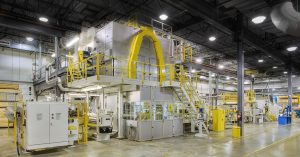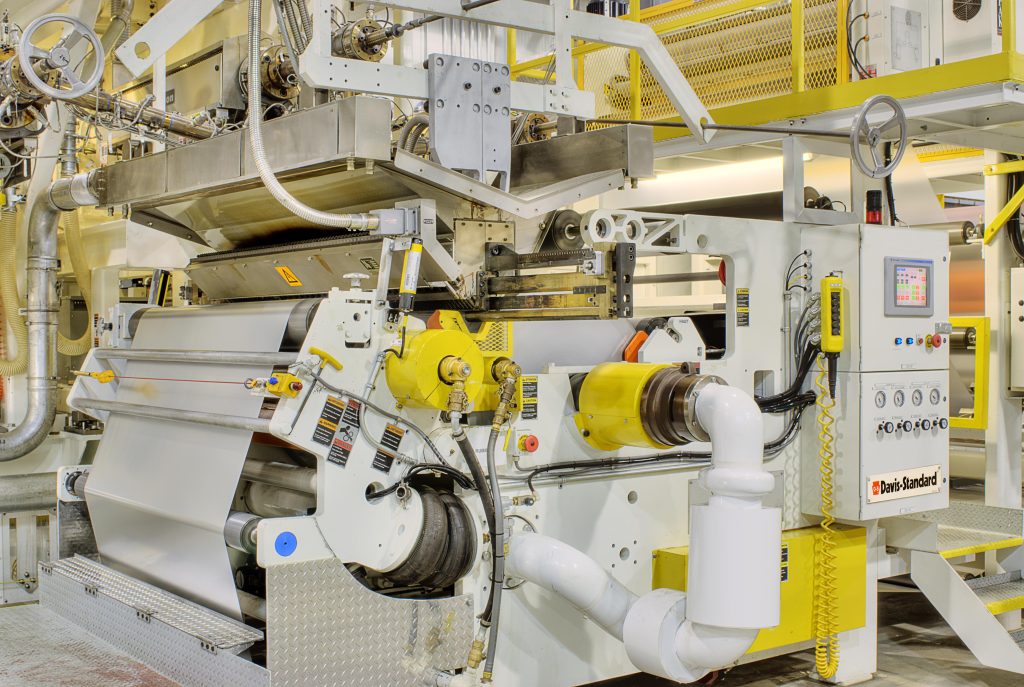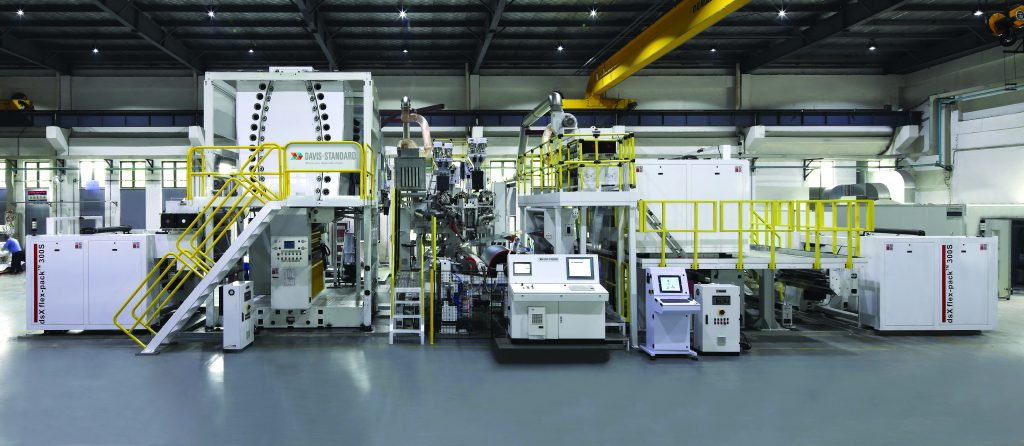In this blog, we’ll discuss how extrusion coating offers several advantages in terms of output,...
Extrusion Coating VS. Adhesive Lamination, Part I – Environmental Advantages

Both extrusion coating and adhesive lamination can be used to manufacture a flexible packaging structure. However, the question of what method to use is often based on what asset is available, not what system is best for a given structure. In this three-part blog series, we’ll examine why you may want to consider extrusion coating over adhesive lamination in terms of the environment, cost and performance. In our first blog, we’ll review two examples of how extrusion coating has the upper hand when it comes to the environment.
ENVIRONMENT
In recent years, there has been much interest in the environmental impact of a given structure. The industry has made significant progress in this area, but we must continue to develop sustainable solutions and practices.
The solvents used in adhesive lamination structures are subjected to a growing number of international laws restricting use. Extrusion coating traditionally uses a water-based primer, eliminating the need for solvents. However, even without solvents, the world desires biodegradable or compostable structures. Work is being done in both extrusion coating and adhesive lamination to achieve this goal.
Recyclability is another critical environmental concern. The more “non-plastic” components in a structure, the less valuable that structure is on the open market. If a minor component is less than 10 percent of the whole, the whole product is classified as a mono-material. For example, when considering a basic chip bag made using the adhesive lamination process, the non-plastic components include the adhesive and the ink. This typically makes up a little over 15 percent of the overall structure. Compare this to extrusion coating, where the only non-plastic component is the ink, resulting in only a 2.5 percent non-plastic percentage.
Adhesive laminated chip bag (Met Film/Adhesive/Film total thickness of 32 GSM) – 4 GSM of non-plastic component. (ink plus adhesive) = 15.6 percent non-plastic
Extrusion coated chip bag (Met Film/PE/Film total thickness of 39 GSM) – 1 GSM of non-plastic component (masterbatch) 2.5 percent non-plastic.
In the next blog (part 2), we’ll compare extrusion coating and adhesive lamination processes in terms of cost.
We are always here if you need us! For questions about how Davis-Standard’s extrusion coating technology can support your process efficiency and profitability, please contact us here.
For any other questions or inquiries, e-mail marketing.


